How to make a slime from soap?
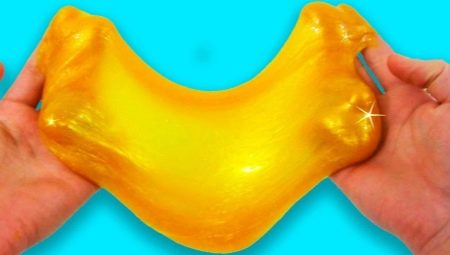
Slime has become a popular toy with children and adolescents, so many of its options have appeared on the market recently that their eyes run wide. Not everyone knows that such a "slime" can be made independently, if you use one of the popular recipes.
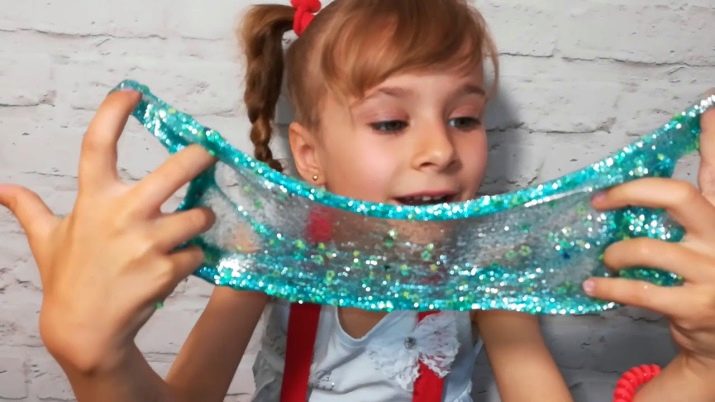
Features of creation
The first slime appeared on the toy market in 1976, when it was made from a jelly-like material, which included guar gum and borax. Both components are not hazardous to human health.
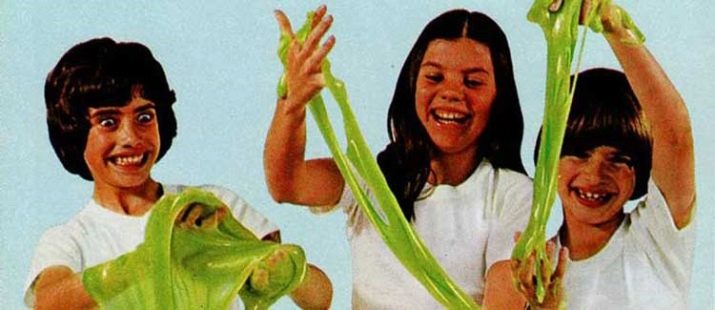
This magnificent toy appeared thanks to the work of a scientist, which was aimed at replacing rubber. The first color in which such a slime was sold was green, today the palette has expanded significantly, there are glitter slimes on sale and even those that can glow in the dark. Slimes that change color from the warmth of human hands are very popular.
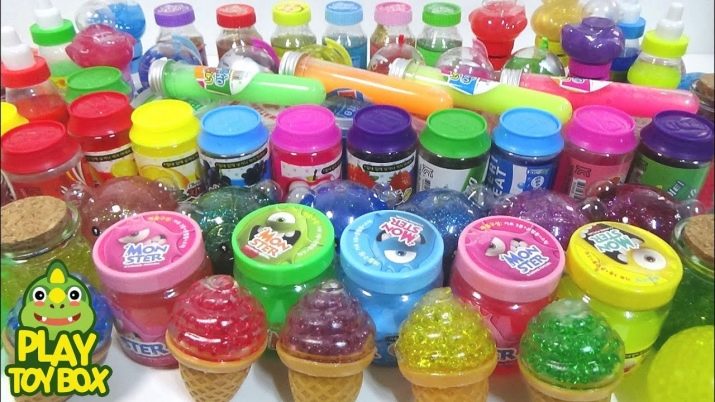
Among the most popular types are:
- fluffy;
- jiggles;
- crunch;
- normal;
- chameleon;
- vesicular;
- transparent.
But the list of possible options is unlimited, since there are many more.
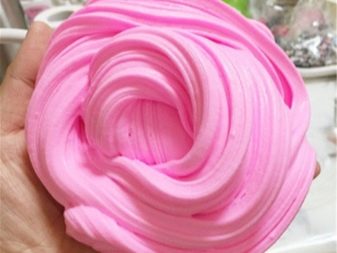
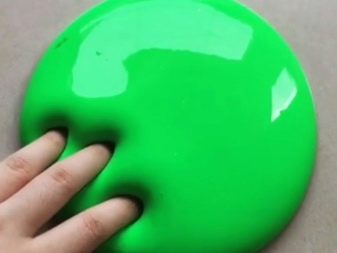
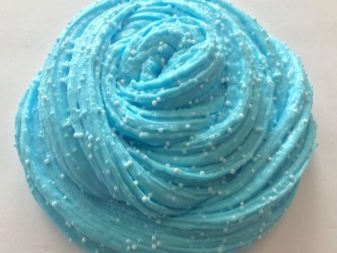
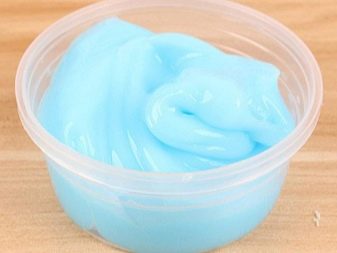

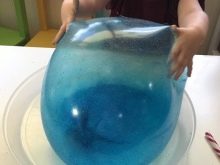
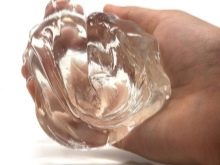
If you have some ingredients that are easy to get hold of, you can make a DIY slime in just a few minutes.
Dyes are used to give it the desired color.
Its characteristics depend on the composition of such a toy. Regular slime quickly spreads in a calm state on a plane, but becomes denser when pressed, other types are denser and create a crunch when stretched.
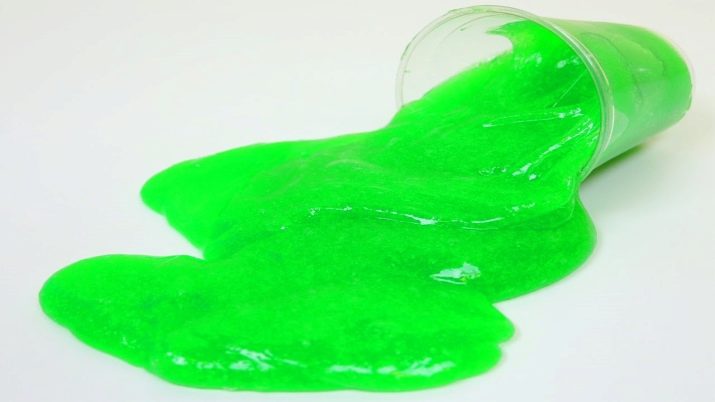
The composition of the slime may include:
- PVA glue;
- corn starch;
- the liquid that is used for the lenses;
- foam used while shaving;
- sodium tetraborate;
- eye drops.
Slime stretches, but does not stick to hands and surfaces, and this is its advantage.
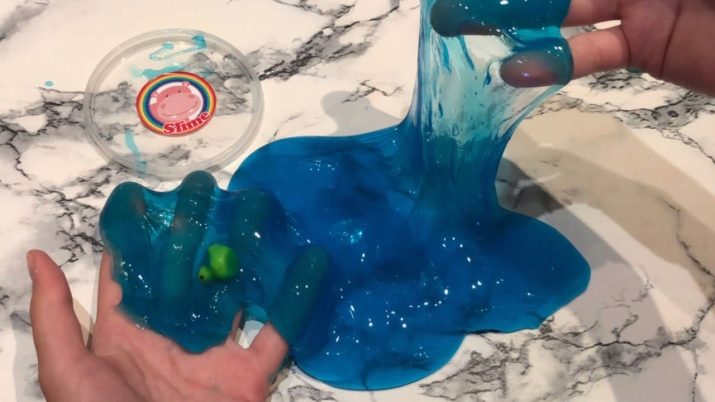
Popular recipes
There are many recipes for how you can make such a toy yourself.
From soap and PVA glue
To make a slime, you will need to prepare some ingredients such as soap, PVA glue, and food coloring. Let's analyze the manufacturing process in more detail.
- Pour liquid glue into a bowl and add 2 drops of dye to it. Stir until the color is evenly distributed.
- Then add about 3 tablespoons of soap. It doesn't matter what it will be, the main thing is that it is liquid.
- Mix everything with special care to get an elastic mass.
- Finally, soak the slime in water for 3 minutes to remove any remaining cleaning agent.

From soap and shampoo
You need to understand that regular solid bath soap is not suitable, you need to use liquid one. The manufacturing process looks like this:
- soap and shampoo are mixed in a container in a 1: 2 ratio;
- mix both components well and add 5 drops of eye drops as an activator;
- stir constantly until the dough is obtained;
- if you want to color the slime, you can add a couple of drops of food coloring and stir again until the color is uniform;
- the slime is kept in the freezer for 10 minutes, after which it is ready.
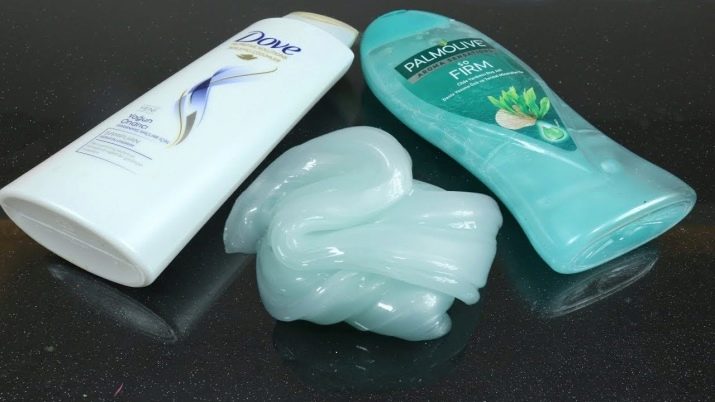
From PVA glue and sodium tetraborate
Simple chemical ingredients can help you create a cool toy at home. For preparation, you will need one bottle of glue, a glass or ceramic plate and sodium tetraborate, which can be replaced with borax.
This method has become the most popular all over the world, because it is the simplest.
Even a child can handle the manufacture, while none of the substances used are hazardous to health.
To prepare slime, you should proceed as follows:
- glue is poured into the finished container;
- water is poured into the vacated container and poured into the PVA, everything is stirred well;
- at this stage, if you do not want to get a milky white slime, you should use a dye;
- borax is diluted in warm water, 50 g is enough for 120 ml, sodium tetraborate can be found in any pharmacy, it is added by eye to the prepared glue mass;
- all components are well mixed until the required consistency is obtained.
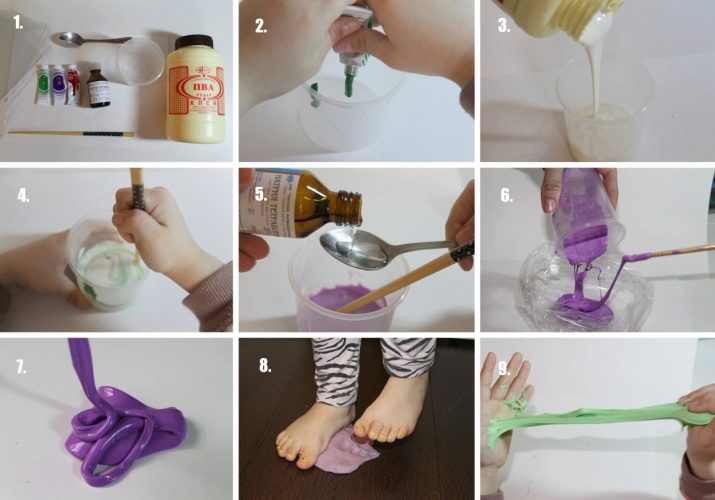
From starch
This recipe does not contain sodium tetraborate, but PVA glue and starch are needed. The manufacturing process includes a number of steps.
- Glue 150 g is poured into a ceramic container, liquid starch is poured in a small stream. For this amount, 30 grams is enough. The mass should curl up, but you cannot overdo it, otherwise nothing will work out.
- To create an interesting effect, you can add glitter, acrylic paint or any other dye at this stage.
- You can mix 125 grams of dry starch with 120 ml of household liquid detergent.
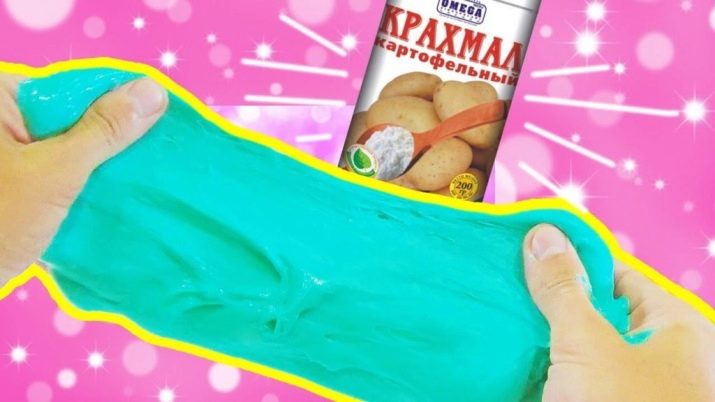
From office glue
This recipe requires a little more ingredients to make slime, but any of them are easy to find on the market.
For preparation, you will need 200 ml of glue, about 100 ml of water, half a teaspoon of baking soda and 20 ml of lens fluid. Any colorant can be used if desired.
Plastic, ceramic or glass containers are best for mixing.... First of all, you need to mix water and glue in it. The composition is mixed well and soda is slowly added. Everything is thoroughly mixed until the desired consistency is obtained. The slime is soft, moist and cool to the touch.
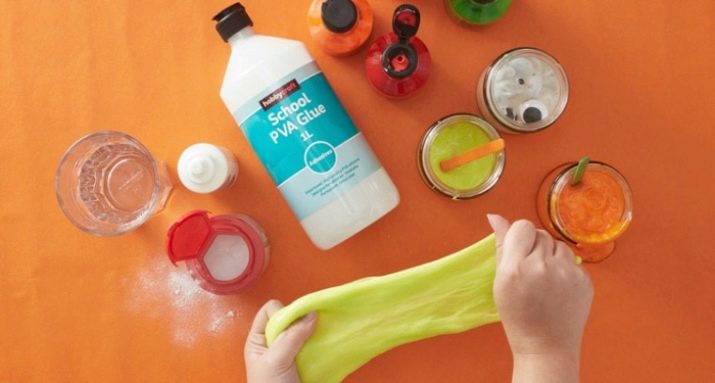
From toothpaste
There are several recipes for making slime with your own hands. from regular toothpaste and a few other ingredients.
- Pasta and flour are used for cooking. To knead the dough well, you need to grease your hands with glycerin.
- For 3 large tablespoons of sugar, add half a tube of pasta. If desired, add a dye, then the mixture is sent to the refrigerator for 3 hours. If the slime sticks to the surface, you can add a little starch.
- You can mix toothpaste and shampoo in equal proportions, mix everything thoroughly, then place the container with slime in the freezer for 10 minutes.
- For 2 large tablespoons of a thick paste, add a spoonful of water and 2 tablespoons of shampoo. Shake everything until smooth for three minutes, then pour in 3 tablespoons of PVA. You can use 10 ml of liquid starch as a thickener.
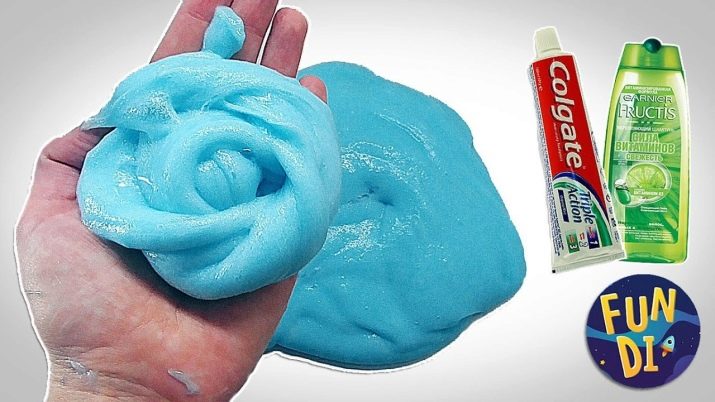
What dyes are suitable?
Colored slimes are obtained through the use of dyes, and it can be not only food. At home, you can use regular gouache or even acrylic. Achieving an amazing emerald hue is obtained thanks to a simple brilliant green.
An attractive shade is obtained even thanks to natural juices, for example, beets or carrots, and even spinach is used. Turmeric and saffron also give the slime a bright color.

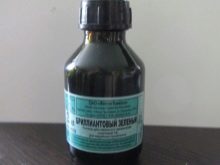
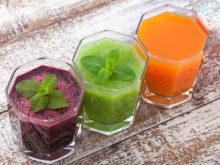
Of all the options described, food grade colors are best mixed and give a uniform shade, which are supplied in liquid form, but they should be used with care as they can leave marks on your hands.
If a child is engaged in the manufacture of slime, they should be replaced with simple gouache, since it can then be easily washed off.
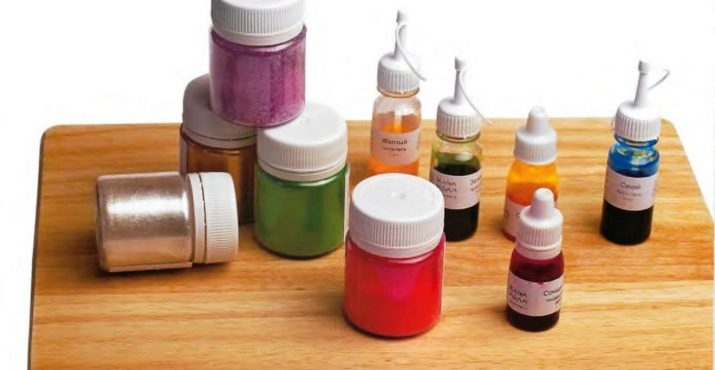
How to care?
Slime, like any other toy, requires attention and care, otherwise it gets spoiled. Over time, villi and small debris penetrate into it, since the child can drop the slime, roll it on different surfaces. For cleaning, it is often enough to simply rinse it under cool water.
If the piece of debris is large enough, it is not so easy to remove it.
In this case, a simple medical syringe can come in handy, into which the slime is placed and squeezed out through the existing needle hole.
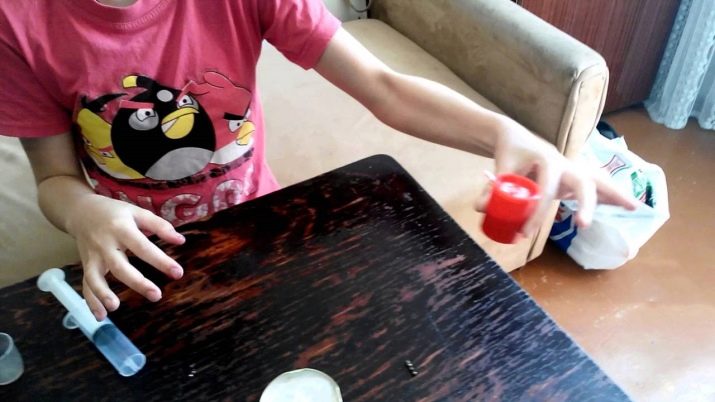
When a toy is stored improperly, it dries up, ceases to be sticky, and coarsens. Even in this case, you can reanimate the slime by putting it in a plastic container, adding a little water, and then closing it. Slime is put in this form for several hours in the refrigerator.
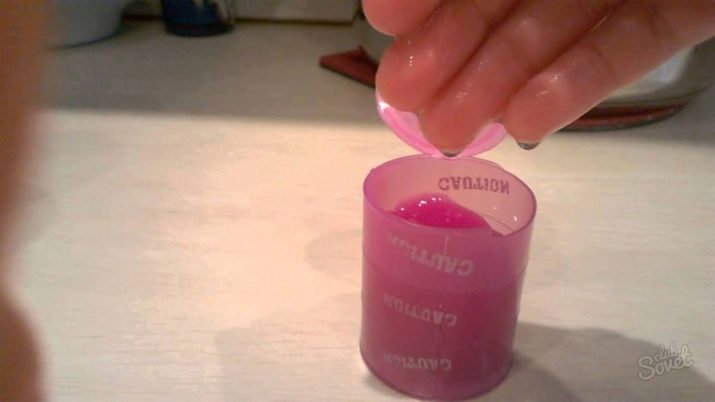
It also happens vice versa. When the consistency becomes too liquid, then you will need to put a small amount of salt in the container and shake the container lightly. Excess moisture is quickly absorbed.
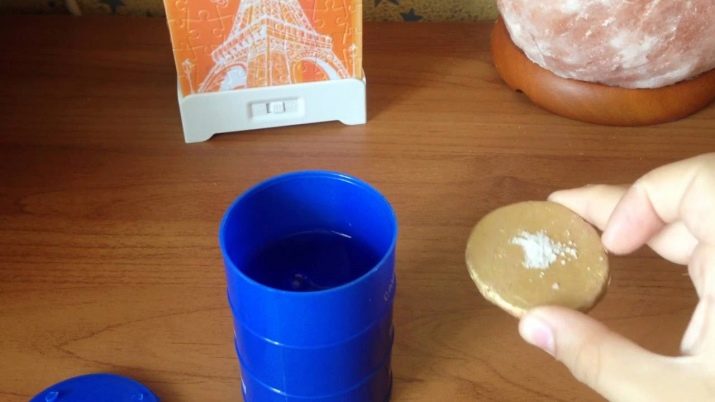
To increase the shelf life of such a toy, keep it closed in a plastic container. The best place is the refrigerator, but not the freezer.
Do not play with slime in water, it will deteriorate.
On average, such a product has a shelf life of 10 days.

An overview of recipes for making slime from liquid soap can be found in the next video.








